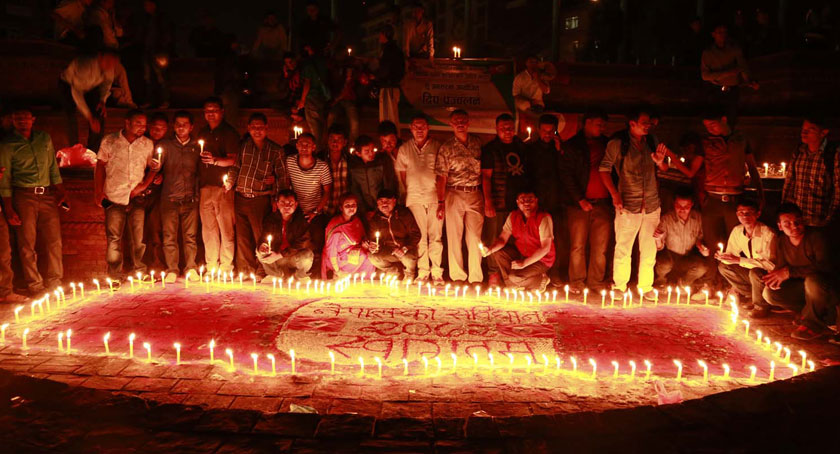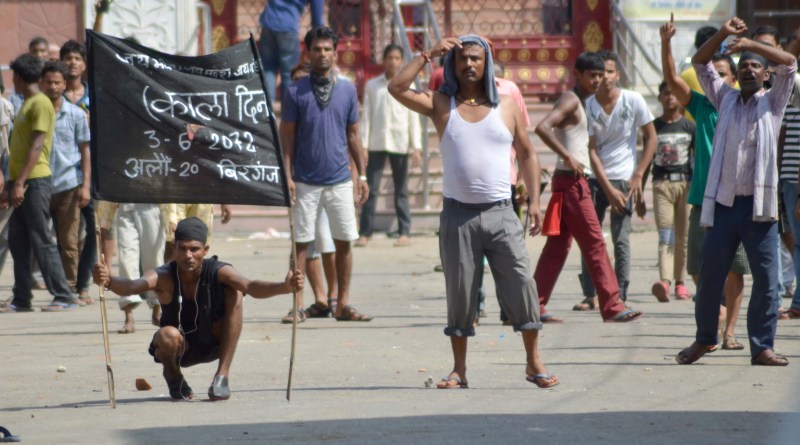September 19 marks the sixth anniversary of the promulgation of the Constitution of Nepal 2015. While a sizable population celebrates the day with fanfare, many in Tarai-Madhes observe Constitution Day as a Black Day, a big setback in their fight for representation and justice.
The constitution, drafted following the decade-long Maoist insurgency and two Madhes movements, is yet to fully address the demands of Madhesis. Nonetheless, although disagreements over the constitution have inevitably surfaced, all political parties have decided to resolve them in a democratic way.
But, what if the constitution had not been promulgated on that day? How would the country be faring today?
Radheshyam Adhikari, member of the National Assembly and ex-chairperson of the Regulation Drafting Committee of the Legislature-Parliament, had closely worked with the constitution’s final drafts. “We promulgated this constitution under a specific situation. The political parties might not have arrived at a consensual document had it not been for the earthquake earlier in the year,” he adds. “The sorry plight of millions of fellow Nepalis imbued our politicians with a sense of duty.”
When the first Constituent Assembly failed to deliver, a second CA had to be elected in 2013. Around 80 percent of the newly elected were new to the assembly. The big difference between the first and the second CA was that while the new revolutionary forces like the Maoists and Madhesi parties were dominant in the first assembly, traditional parties like Nepali Congress and CPN-UML had reclaimed their dominant position in the second assembly. This, in the eyes of many, greatly diluted progressive agendas of the post-2008 period.
But Adhikari reckons there wouldn’t have been a third CA had the second one also failed to deliver a constitution. “In such a situation, we would have gotten a constitution, but through some commission and not via people’s representatives,” he says. “Such a national charter would not have reflected people’s aspirations.”
 Youths light candles at Maitighar Mandala as the Constituent Assembly endorsed all the articles of draft constitution on 16 September 2015 | Photo: RSS
Youths light candles at Maitighar Mandala as the Constituent Assembly endorsed all the articles of draft constitution on 16 September 2015 | Photo: RSS
Santosh Mehta, spokesperson for the then Rastriya Janta Party Nepal, reminisces the time he felt the CA veered off-course in 2015. “I hadn’t imagined the major parties would ditch the demands of the Madhesis and treat us as if we are not Nepalis,” says Mehta. He says this constitution has divided Nepalis by creating psychological barriers between the country’s major ethnic groups. “Relations between the various ethnic groups would have been stronger and more cordial without this disrespectful constitution,” Mehta adds.
It took almost a decade following the 2007 Madhes movement to promulgate the constitution. Political parties tried to forge consensus in this time, mostly on the contentious issue of the number and nature of federal provinces, but to no avail. In the desperate post-earthquake days, all major parties had to compromise on their agendas to give the country a way out. But they failed to have Madhesi parties on board.
“It was no big deal. Had we not been able to have a constitution in September 2015, we would have had one by early 2016, which would also have helped resolve most contentious arguments,” claims Chandrakishore, a Birgunj-based journalist. He says major parties rushed the process, ignoring the demands of a large portion of the population. “They issued an urgent whip to the CA members without giving enough time to the parties on the street, in what was an intentional provocation,” he adds.
Fed up with the autocratic monarchy, there was a surge of hope among the people when the country became a federal republic in 2008.
“That hope would have died had the second CA also failed to deliver a timely constitution,” says constitutional expert Bipin Adhikari. “No one would then have believed that people’s representatives were capable of steering the country.” Adhikari thinks people would then have started pining for the monarchs again.
As nearly 90 percent of CA members (538 out of 598) voted in the charter’s favor, many politicians continue to consider it among the best constitutions in the world.
 Youths of Birgunj protesting against the promulgation of Constitution of Nepal 2015 | Photo: Madhesi Youth
Youths of Birgunj protesting against the promulgation of Constitution of Nepal 2015 | Photo: Madhesi Youth
Political analyst CK Lal reminds that each of Nepal’s seven constitutions—be it the one in 2015, in 1962 or in 1948—was touted as ‘the best in the world’. “This title has always jinxed us,” he shares. “If the second CA had also failed to deliver, they would most probably have added federalism to the Interim Constitution of Nepal 2007 and made it permanent,” he says. “This would have been better as the 2015 constitution is more regressive than the interim one in terms of the demands of Madhes.”
Hisila Yami, a member of the first Constituent Assembly from UCPN (Maoist), echoes Chandrakishore. “The 2015 constitution would have been more widely hailed and accepted had it been postponed by a few days,” she says. The constitution, in the form it was promulgated, watered down the rights of women, indigenous, and minority populations. Yet, she is happy that the second CA finished off a must-do task.
Sixty people were killed during the months-long protests against the constitution—six of them on the very day of its promulgation. Observers in favor of the parties’ decision to push for the constitution say that this number would have significantly increased had the constitution been put off any longer, while those against say nobody would have had to die in that case.
Most progressive political actors accepted the Constitution of Nepal 2015—even if some did so grudgingly—as it institutionalized federalism and paved the path to socialism.
Madhes-based critics, however, still have problems with citizenship, provincial structure, proportional representation and inclusion-based issues. Lal says major parties’ leaders won’t listen to Madhesi agendas. For him, eventually, there has to be another revolution to right the wrongs.
Yami says there are quite a lot of ways to make the constitution better—it’s just a matter of political commitment. Here too, she thinks Nepal needs a national political consensus. “This constitution is a glass half-full. We have to fill it soon,” she adds.
Constitutionalist Adhikari says any constitution is a work of compromise. “No one gets to fulfil all their demands,” he concludes.













